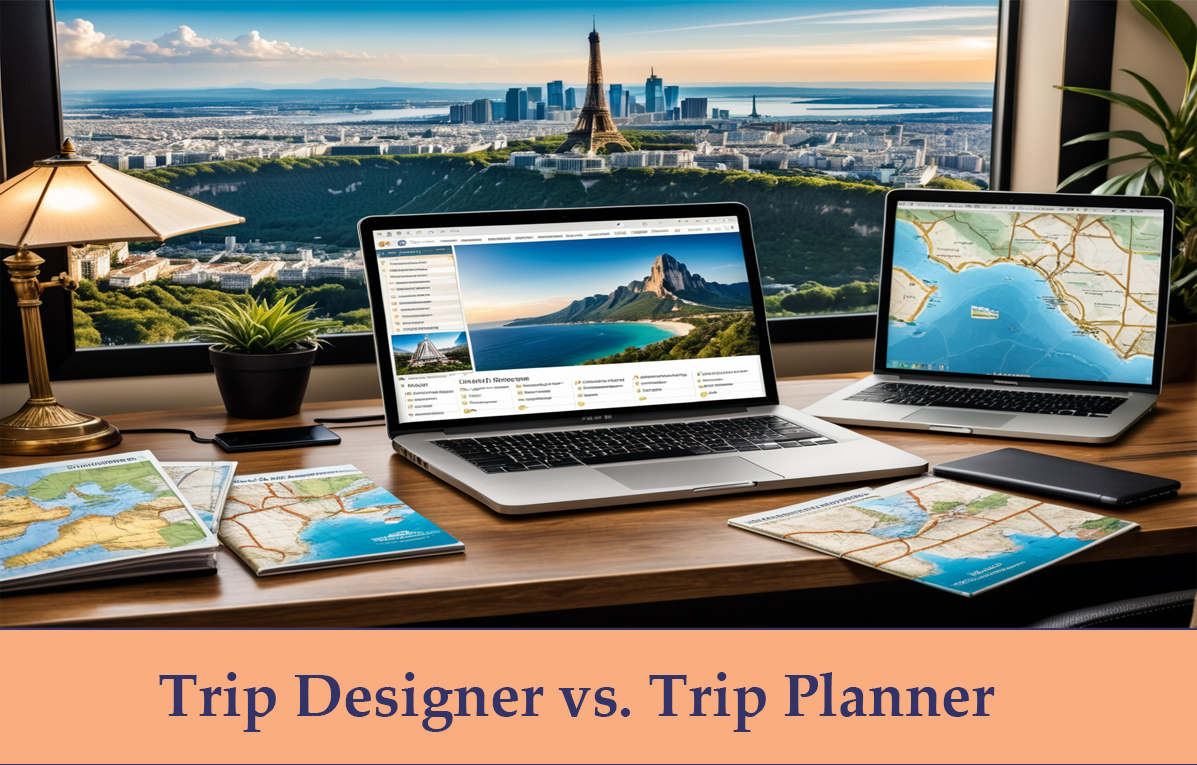Trip Designer vs. Trip Planner: Understanding the Differences
When planning a vacation, many people use the terms “trip designer” and “trip planner” interchangeably. However, there are distinct differences between the two roles, each offering unique services and experiences. Understanding these differences can help travelers choose the right professional for their needs.
Trip Designer: Crafting Unique Travel Experiences
What is a Trip Designer?
A trip designer is a professional who focuses on creating customized travel experiences that go beyond standard itineraries. They combine creativity, extensive destination knowledge, and personal connections to design bespoke trips tailored to the traveler’s interests, preferences, and expectations.
Key Responsibilities of a Trip Designer
- Personalized Itineraries
- Trip designers take the time to understand their clients’ desires and interests, creating personalized itineraries that reflect these preferences. This may include unique experiences, exclusive tours, and off-the-beaten-path destinations.
- Example: For a food enthusiast, a trip designer might organize a private cooking class with a renowned local chef, visits to hidden food markets, and reservations at exclusive restaurants.
- Exclusive Access and Special Experiences
- Trip designers often have industry connections that allow them to secure exclusive access to events, attractions, and accommodations that are not available to the general public.
- Example: They might arrange a private tour of a historic landmark, VIP tickets to a popular event, or a stay in a boutique hotel that is usually fully booked.
- Attention to Detail
- Every aspect of the trip is meticulously planned, from transportation and accommodations to dining and activities. Trip designers ensure that every detail is considered, providing a seamless and luxurious travel experience.
- Example: A trip designer might coordinate seamless airport transfers, book premium seats on flights, and ensure that dietary preferences are catered to at all dining venues.
- Unique Themes and Concepts
- Trip designers often create trips based on unique themes or concepts, such as adventure travel, wellness retreats, cultural immersions, or romantic getaways.
- Example: Designing a wellness retreat that includes daily yoga sessions, spa treatments, and healthy gourmet meals in a tranquil setting.
Who Benefits from a Trip Designer?
- Luxury Travelers: Those seeking a high-end, personalized travel experience with exclusive access and top-tier services.
- Special Occasion Travelers: Individuals planning significant trips such as honeymoons, anniversaries, or milestone celebrations.
- Busy Professionals: Travelers who lack the time or desire to plan intricate details and prefer a professional to handle everything.
Read also:
Trip Planner: Organizing Efficient and Enjoyable Journeys
What is a Trip Planner?
A trip planner is a professional who helps travelers organize their trips by handling logistics, making reservations, and creating detailed itineraries. Their focus is on ensuring that the trip is efficient, cost-effective, and meets the traveler’s basic needs and expectations.
Key Responsibilities of a Trip Planner
- Itinerary Planning and Scheduling
- Trip planners create structured itineraries that include all the necessary details such as flight schedules, hotel bookings, and activity timings. They ensure that the trip flows smoothly and that all logistics are taken care of.
- Example: A trip planner might create a day-by-day itinerary for a family vacation to a theme park, including accommodation, park tickets, dining reservations, and transportation.
- Booking and Reservations
- They handle all the bookings, from flights and accommodations to car rentals and restaurant reservations. Trip planners ensure that all reservations are confirmed and that any special requests are communicated.
- Example: Booking a series of connecting flights, securing hotel rooms in different cities, and reserving rental cars for a cross-country road trip.
- Budget Management
- Trip planners often work within a budget to create a cost-effective travel plan. They seek out deals and discounts, helping travelers get the most value for their money.
- Example: Finding affordable yet comfortable accommodations, identifying free or low-cost activities, and suggesting economical dining options.
- Travel Documentation and Insurance
- They assist with obtaining necessary travel documents such as visas, passports, and travel insurance. Trip planners ensure that all paperwork is in order and that travelers are prepared for any contingencies.
- Example: Guiding travelers through the visa application process and recommending suitable travel insurance plans.
Who Benefits from a Trip Planner?
- Budget-Conscious Travelers: Individuals looking for an affordable and well-organized trip without the luxury frills.
- First-Time Travelers: Those who need assistance navigating the complexities of travel planning and want a straightforward, hassle-free experience.
- Group Travelers: Families or groups who require coordination of multiple reservations and schedules.
Conclusion
Both trip designers and trip planners play crucial roles in the travel industry, catering to different needs and preferences.
- Trip Designers excel in crafting unique, high-end travel experiences with personalized touches and exclusive access.
- Trip Planners focus on organizing efficient, budget-friendly trips with meticulous attention to logistical details.
Choosing between a trip designer and a trip planner depends on your travel style, budget, and the type of experience you seek. Whether you’re looking for a bespoke luxury vacation or a well-organized, cost-effective journey, understanding the distinctions between these two roles will help you select the right professional to bring your travel dreams to life.




